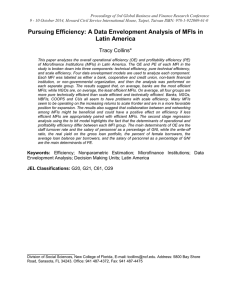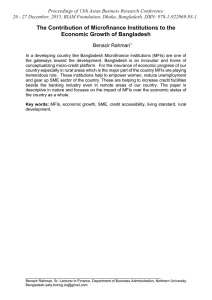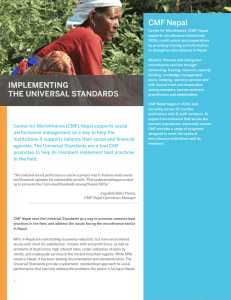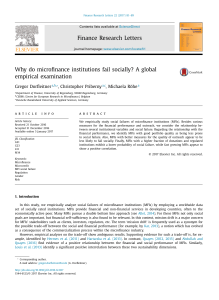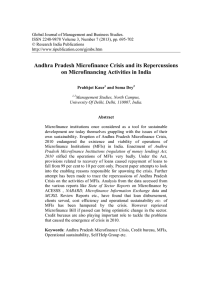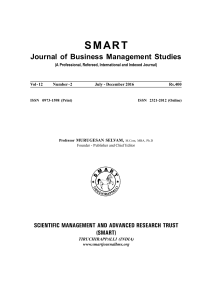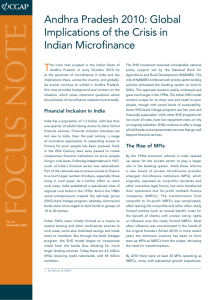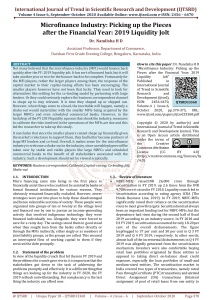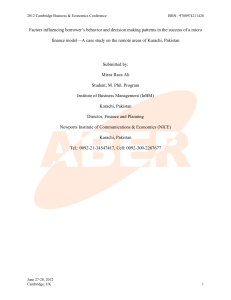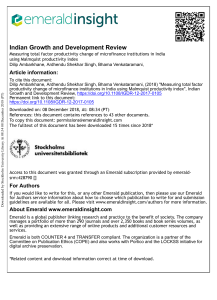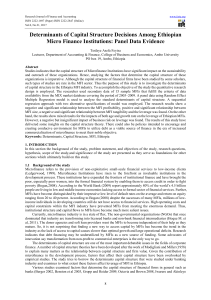Social Performance Management Dr. Reem Ramadan
advertisement
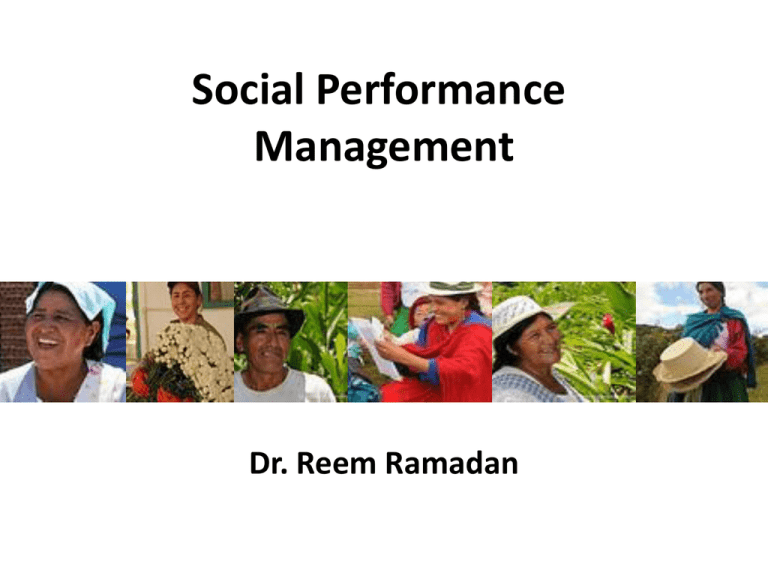
Social Performance Management Dr. Reem Ramadan Putting the “Social” into Performance • As social businesses, microfinance institutions (MFIs) apply commercial means to achieve social ends. • Social goals include larger numbers of poor and excluded people; improving the quality and appropriateness of financial services; creating benefits for clients; and improving social responsibility of an MFI. Financial Performance of MFIs Loans outstanding, Profit margin, Operating margin, OSS, FSS and PAR About Numbers Social Performance of MFIs Social mission, poverty outreach, impact, client satisfaction & loyalty, respect for staff and clients and participation About People People + Numbers = Success What is Social Performance? Social performance is the effective translation of an institution’s social mission into practice in line with accepted social goals Social Performance Management (SPM) The process of translating mission into practice, including setting social objectives, tracking Social Performance, and using information to improve practice 1) demonstrate program impact 2) improve program services Assessment with Action Managing to Achieve Desired Results • Performance is not incidental Mission • What is explicitly defined and measured is what people excel at – Need to define desired performance – Need to measure results against desired performance Social Performance Financial Performance Performance Management 6 Components of Social Performance Management • Developing social performance goals and relevant strategy to achieve those goals. • Monitoring and assessing organizational performance towards achieving and attaining its social goals. • Institutionalizing and using social performance information to develop organizational performance. Dimensions of Social Performance Intent and Design Internal Systems/ Activities Outputs Outcomes Impacts INTENT AND DESIGN What is the mission of the institution? Does it have clear social objectives? INTERNAL SYSTEMS & ACTIVITIES What activities will the institution undertake to achieve its social mission? Are systems designed and in place to achieve those objectives? OUTPUT Does the institution serve poor and very poor people? Are the products designed to meet their needs? OUTCOME Have clients experienced social and economic improvements? IMPACT Can these improvements be attributed to institutional activities? Social Performance Management “Effective translation of mission into practice” Information system Intent Governance/ • Management/Strategy Policies • Systems Development Goals/Objectives & Use • Product & Service range • Human resources Outputs Outcomes Changes Outreach/ Services Product & service development & delivery Impact Benefits of Social Performance Better management (balance financial/social objectives, base line info., performance tracking, early warning systems) More client-responsive (appropriate services, more product choices, better customer service) Improved outreach and services (portfolio segmentation, understand client use, innovations, verify impact of programmatic changes, track impacts on clients) Improved financial performance (better client retention, growth, lower operational costs) Final Word… MFIs that integrate a social lens into performance management processes will benefit not only from more loyal and satisfied clients, but also an ability to demonstrate social outcomes to external stakeholders, including social investors.
